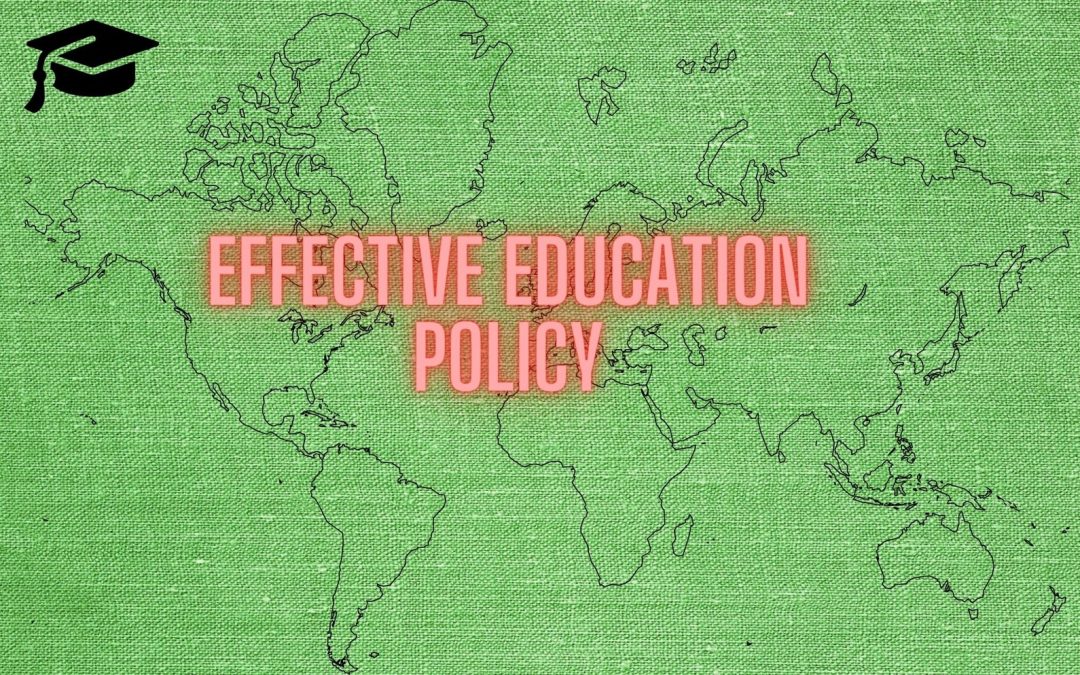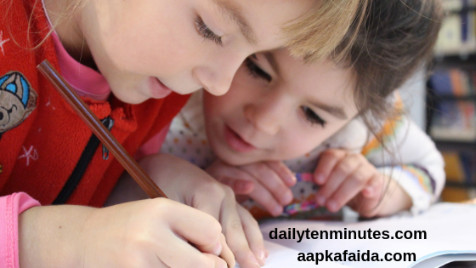No Results Found
The page you requested could not be found. Try refining your search, or use the navigation above to locate the post.

With continuous increase in population on the planet and high rate of sudden death of young parents, it is imperative that new orphanages are established and operated in our societies. While most of the governments across the world are not economically strong enough to execute and sustain such projects, it is saddening to see that not many rich people pay attention to this critical social cause. How to run an orphanage. Operate and sustain and orphanage.
If you are reading this article and care about this cause, please try inspiring at least one rich person on earth. Even if you do not know any rich person or philanthropist in your social circle, simply share this article on your social media, because your re-share / re-publish may inspire someone somewhere. Your little effort may result in huge benefit to hundreds (or probably thousands) of orphans. Right?
Let us start the guide on how to run an orphanage

Do not perform actions on “as you go” basis, instead spend time on planning so that you can avoid any risk of doing mistakes. For the fit-out, you need to focus on the low level details on things, their costs, their usability, warranty, design, capacity and size. Make a list of items that are critically needed, discuss with your colleagues, partners to edit and refine the list. Once finalized start working on purchasing the items. Always start with the most critical ones and avoid the least usable as much as possible. Your time, money and efforts are important so do things right from start. Following are the areas that you should be focusing on:



Maintaining orphan’s record should be done with care.
Try to create a dedicated page on your website where you can publish monthly charges per orphan. Please note that there are many wealthy people who would love to provide monthly donations based on per-orphan-expenses. There could be many kind hearted people who cannot adopt an orphan but they can sponsor a specific number of orphans. The more detailed information you are able to provide on your website, the more confidence and trust you develop with philanthropists. If possible, publish monthly reports on the website and try to send these reports to all the sponsors to let them feel great about what they are doing. This will encourage them as well as others to contribute more towards this noble cause.
Great projects must be sustained for longer. Sustaining an orphanage is all about availability of enough cash (for at least one year) and commitment of the orphanage owner or executive committee. Following are some recommendations on this subject.

Students have so many types based on their behavior, habits, responsiveness, class environments. Below is somewhat funny list of students. Check it out and let us know in comments about what kind of student you are or have been!
1- The Star Student: This is teacher’s favourite although disliked by many of his/her classfellow. This student knows answers to most of the questions teacher asks, has outstanding behaviour in the class and passes the exams with flying colors
2- Always Late Comer: Such student is usually non-serious in the study. If given choice, will prefer not to come to the class at all. If asked by teacher the reason of being late, he/she will have weired reasoning
3- The Deep Sleeper: Usually takes the last bench and completes his/her sleep cycle in the class. Usually the reason for being sleepy is that he/she had been watching TV or playing games last night.
4- The Supplier (of stationary): Keeps extra pen, pencils, ruler, rubber, pages, white marker, socks(kidding) and so on. Always have redundant materials and assists his/her fellow beings
5- Business Kid: Comes on formal suiting which he/she has probably learnt from parents. Try to stay formal as if they own the school and after graduation, they will simply take the place of principal.
6- Sports Kid: Keeps his sports kit in the car, wears joggers, and ready for the gym all the times. Tries to impress others by his/her atheletic outfits.
7- Drummer Kid: keeps drumming on the desk while the class is running. A non-serious soul, disturbs the class mostly
8- Heavy Back Kid: – Brings heavey bag full of stuff whether related or non-related (books, make-up stuff, mobile, charger, cables, multiple notebooks and so on.
9- The Procrastinator: Leaves everything to the last minute.
10- The Day Dreamer: This student keeps thinking something else and doing something else in his/her imagination during the span of class
11- The Notes Writer: Writes everything the teacher has said. Whether he/she understands or not, always try to make notes even if teacher is reading from the book!
12- Notes Passer And Receiver: Another non-serious category of students. This kind of student, writes short messages on paper and keeps passing here and there.
13- Absent Student: Mentally not in the class sometimes due to stress or family reasons. Needs a little attention and ethical support

14- Doodler: Keeps drawing something on his/her copy and doesnt pay attention to the teacher. If you see his/her notebook you will be astonished to see such an artist!
15- The Drama Kid: This student has all the stories and dialogues of the world and keeps amusing his/her peers.
16- The Snack Trader: The fasto Keeps exchanging his food with classfellows. The food lover, keeps tasting food from most if not all class fellows
17- Secret snack Eater: Eats others’ snacks while they are away. Sometimes tell them out of ethics and sometimes simply loves to hide!
18- The Neverous Presenter: Lacks in confidence of presentations. Even if knows the stuff, does not have the courage to speak when asked by teacher.
19- “Dont Pick Me” kid: Tries to ‘hide’ himself/herself by bowing the head when teacher asks a question. This is either due to lack in confidence or simply doesnt know the answer.
20- The Pencil kid: – Another time wasting catory of student. Keeps playing with pencils and pens.
21- The Class Clown: The non-serious one thinks he is heart of the class and sometimes he becomes so but totally a time waster!
22- In-trouble kid: Disorganized, confused, shy kid
23- The Provoker: Provokes others to fight, creates conflicts and disconnects
24- The Notes-Taker: Creates detailed class notes.
25- Laptop kid: Tries to type as much as possible, behaves as if he is going to rule the world 🙂
26- Gum Chewer: The over confident one. Creates non-serious environment by offerng chewing gums to class fellows
27- Game Player: Least interest in study but always up to date on what is latest in PlayStation and XBOX
28- Phone watcher: Deceives teachers and keeps checking out his/her mobile every now and then
29- The Secret: He remembers all the important stuff and thinks he/she has to share this secret with the rest of class
30- The Neat kid: Gentleman of the class, the sober one

31- Organized kid: Brings his/her stuff, does not rely on others, follows the time table and up-to-date with the class activities
32- Getting pranked by someone: – The extrovert gets picked up by the bully
33- Have to Pee student: – Every other class he/she needs to go to restrooms (some cases being sick, are genuine, not to make fun of such students)
34- The Crying Baby: Sir, he has taken my pen. Miss, page number 39, second paragraph will come in the exam? oh no!
35- The Night Owl: Thrives on late-night study sessions.
36- The Overachiever: Always strives for perfection.
37- The Visual Learner: Relies on diagrams and images.
38- The Group Studier: Prefers studying with peers.
39: The Library Dweller: Lives at the library.
40- The Tech Whiz: Uses digital tools for studying.
41- The Flashcard Fanatic: Swears by flashcards for memorization
42- The Research Guru: Excels at digging deep into topics.
43- The Calculator: Focuses on math and calculations.
44- The Quiet Reader: Consumes textbooks like novels.
45- The Quiet Reader: Consumes textbooks like novels.
46- The Multitasker: Studies while doing other activities.
47- The Question Asker: Always has questions in class.
48- The Last-Minute Crammer: Only studies right before exams
49- The Highlighter Aficionado: Colors every page with markers.
50- The Competitor: Turns studying into a competition.
51- The Self-Teaching Prodigy: Learns independently.
52- The Time-Management Expert: Efficiently plans study time
53- The Study Break Enthusiast: Values breaks during study sessions.
54- The Class Clown: Makes everyone laugh in class.
55- The Artsy Creative: Expresses through art and creativity
56- The Athlete: Excels in sports and physical activities.
57- The Foodie: Obsessed with school cafeteria offerings.
58- The Bookworm: Devours novels during breaks.
59- The Gamer: Plays video games during free time.
60- The Volunteer: Engages in community service.
61- The Nature Enthusiast: Explores the outdoors.
62- The DIYer: Crafts during downtime.
63- The Debate Champion: Loves a good argument.
64- The Jokester: Pulls pranks on friends.
65- The Pet Lover: Brings pets to school-related events.
66- The Traveler: Dreams of exploring the world.
67- The Social Media Influencer: Documents school life online.
68- The Inquisitive Mind: Always curious and seeking knowledge.
69- The Critical Thinker: Analyzes information deeply.
70- The Reflective Learner: Ponders lessons and experiences.
71- The Reflective Learner: Ponders lessons and experiences.
72- The Collaborator: Enjoys group projects and discussions.
73- The Empathetic Learner: Understands others’ perspectives.
74- The Problem Solver: Thrives on tackling challenges.
75- The Creative Innovator: Generates new ideas and solutions.
76- The Visualizer: Envisions concepts in a unique way.
77- The Mentor: Helps others understand complex topics. Motivates other students to excel
78- The Lifelong Learner: Never stops pursuing knowledge.
79- The Orphan Advocate: Passionate about helping orphaned children.
80- The Human Rights Champion: Advocates for justice and equality.
81- The Charity Organizer: Leads fundraising efforts for various causes.
82- The Community Builder: Initiates projects to strengthen the local community.
83- The Tech for Good Innovator: Uses technology to address social issues.
84- The Content Writer: Creates compelling content to raise awareness. if you are good in writing and reading this article, check out our write for allgoodschools section
85- The Volunteer Coordinator: Connects students with volunteer opportunities.
86- The Public Speaker: Addresses issues in public forums and events.
87- The Health Advocate: Promotes well-being and healthcare access.
88- The Peace Ambassador: Promotes peace and conflict resolution.
89- The Advocacy Blogger: Writes blogs to advocate for causes
90- The Mentorship Mentor: Guides and mentors peers.
91- The Future Concerned: Always have strong vision about the future, finding the job, building the skills, performing trainings and certificates.
92- The Personality Concerned: Thinks and improves his overall personality, mind, body, soul. Studies different aspects of personalities and advocates others as well.
What kind of student you have been? Are your kids differnet than you? What other types of students do you think have not been mentioned in this article? Please do let us know in the comments section.

Choeifat school system is one of the oldest school systems of middle east with 30+ branches in UAE, Middle East, Europe, America and Australia. According to Wikipedia
SABIS is an education management organization that operates schools in fifteen countries on five continents in both the private and public sectors [1] and licenses a proprietary education program. According to the company, schools in the SABIS Network educate over 70,000 students and implement a proven, proprietary system.
– Choeifat Sharjah School area is huge which makes it convenient for managing hundreds of students in terms of classrooms, physical activities, pick-up and drop off points for parents, school transportation system.
– Quality of education is very good as school has systematic approach which is based on years of research across the globe.
– Quality of teachers is very good. Selection of teachers seem to be qualitative and most of the time students provide positive feedback about teachers and the way of teaching
– School has earned its respect as one of the highest rated school in the community
– School treats the student (specially teenagers) as adults that develop more maturity and help student become confident members of society and better professionals in their life.
– School provides prayer room for the kids
– Teachers are chosen from the wide range of nationalities which gives a lot of exposure and diversification to the students in terms of culture awareness, speaking accent and approach of teaching.
– Support staff’s behavior is not friendly. Many parents are not comfortable while interacting with school staff.
– School has less focus on Islamic studies.
– School area is huge whereas most of the walking areas are not shaded. With high temperatures for almost 8-9 months of the year, it is not easy to walk from the parking area to the class or the administration section.
– School books (physical and e-learning) is one of the costliest.
– Schools expects parents to pay full fee for the first semester 6 months in advance which makes hard for the parents. This seriously affects the expat community to pay the full fee in advance
– Students must have high-end tabs in order to run the e-learning application.
Need more reviews about Choeifat Sharjah? Visit this resource
If your kids are studying in this school, we encourage you to provide your opinion (small or detailed one) which would help other parents. In case your kids are not studying here and you have read this school review for choosing (or not choosing) this school for your kid(s), we recommend reading our detailed articles:
The page you requested could not be found. Try refining your search, or use the navigation above to locate the post.
When it comes to being a top-notch student, there are many obstacles that can get in your way. Friends can drop by at any time, steering you away from your to-do list for school. Top 7 Ways to Stop Procrastinating
Children are always active. Either playing, or fidgeting or running from one place to another. And honestly, this is a good thing. Why Your Kid Should Be Active and 7 Tips To Achieve This
Indian Students choose to study abroad because it offers them a high paid job, a secure future, & quality lifestyle. It caters to their overall development. 10 Big Reasons why Indian Students Choose to Study Abroad
Saving money is a skill that is important When it comes to finances, teaching kids about delayed gratification can help them prevent pointless spending, cut down their expenditures, and develop a value for taking charge of their finances. How To Get Your Kids To Cut Costs
Everyone has been there. On the playground, one girl snatches another girl’s hair and pulls her off the swing. The lunchroom in which, “the cruel child” knocks over a younger boy’s tray, causing his food to fall out. In the classroom, a group of students mocks the class’s youngest student for being stupid. How does bullying affect your child’s psychology?
Can Video Games Be Productive For Students?As parents, you may think that video games are just for leisure and ruin education. However video games may also help ramp up concentration, maximize memory and improve your children’s language.
How Technology and the Internet Affect Children’s Development. Article covers benefits, drawbacks and recommendations on this subject.
This article provides 4 helpful points for free homeschool. It has some suggestions on how to homeschool on a budget or even free.
Hands-on learning, Nature time, or studying? Hands-on learning is much more fun for kids – and they tend to retain the information better. This article is about What is more important play or study?
Everyone has different expectations from school. What Expectations Do You Have From The School?

AI in Parenting 15 Useful Tools and Apps for Busy Parents AI in Parenting 15 Useful Tools and Apps for Busy Parents is an informative article that offers valuable insights into the world of artificial intelligence and its role in assisting parents. This article...

Building self-approval in children is paramount for fostering resilience, confidence, and a positive self-image that will serve them well throughout their lives. As parents, guardians, or caregivers, we have the power to cultivate an environment that nurtures...

The journey of parenting, always an expedition of love and learning, has begun to weave through the digital landscape, introducing new tools and allies. Among them, AI and parenting apps stand out, reshaping how we nurture, educate, and bond with our children. Let's...

An education policy plays a vital role in the success of a country. This article will cover 25 Core Elements of a Robust Education Policy. The Education policy for every country is extremely critical due to several significant reasons. Benefits of a Robust Education...

What is IB Education 13 Effective Study Methods for IB students Active Learning Use Multisensory Techniques Regularly reviewing and revisioning contents Make Complex Concepts Simple to Understand Make use of online Resources and Tools Establish explicit Goals...

Top 10 New Year Resolutions for Teachers Welcome, my fellow educators! As the bell chimes midnight and the confetti settles, it's typical to take a moment to reflect on the past year and start scribbling down those aspirational New Year’s resolutions. But let's be...

Measuring the enhancement of a school's overall quality of education, sports, facilities, extracurricular activities, and the promotion of students' careers can involve a wide range of Key Performance Indicators (KPIs). Here are possible 20 Private school KPIs for...

Discovering Your True Purpose11 Practical Steps of Living a Purpose Life and Acheving Your Life PurposeUnlock Your Purpose - 11 Practical Steps for Living a Meaningful Life Discovering Your True Purpose Discovering your true purpose in life is a deeply personal and...

Ok, India is one of the largest economies of the world. Through its current education system, India produces best brain and supplies to the whole world. Yet, India has one of the poorest literacy rates in the world and most of its population does not have access to quality education.
The Indian education system, while making significant strides, still grapples with several challenges. Here are ten major problems and possible solutions
Disparities in educational access persist across socio-economic backgrounds, regions, and rural-urban divides, limiting opportunities for marginalized communities
To address inequality in access to education in India, a multi-pronged approach is necessary. Firstly, targeted interventions should be implemented to ensure equitable distribution of educational resources, particularly in marginalized and remote areas. This includes building schools, providing infrastructure such as classrooms, libraries, and sanitation facilities, and supplying textbooks, learning materials, and technology to underserved communities.
Additionally, initiatives like mid-day meal programs, transportation assistance, and scholarships can help mitigate economic barriers and incentivize school attendance among disadvantaged groups.
Moreover, empowering local communities and stakeholders to actively participate in educational decision-making and governance processes is essential. Collaborative efforts involving government agencies, non-profit organizations, businesses, and community leaders can mobilize resources, raise awareness, and advocate for policies that prioritize educational equity. By fostering partnerships and grassroots initiatives, tailored solutions can be developed to address the unique challenges faced by different regions and communities, ultimately bridging the gap in educational access and ensuring that every child has the opportunity to fulfill their potential through education
Many schools lack adequate infrastructure, qualified teachers, and resources, resulting in substandard educational experiences and outcomes for students.
The curriculum often prioritizes rote learning over critical thinking and practical skills development, failing to meet the demands of a rapidly changing world.
Factors such as poverty, child labor, early marriage, and inadequate infrastructure contribute to high dropout rates, particularly among girls and disadvantaged groups.

There is a shortage of qualified and motivated teachers, and existing educators often lack proper training, support, and incentives, affecting teaching quality and student engagement
Fixing the issue of teacher quality is crucial for ensuring the delivery of effective and impactful education in India. To address this challenge, a multifaceted approach is needed that encompasses several key strategies. Firstly, there should be a concerted effort to enhance teacher training programs and professional development opportunities. This includes revamping pre-service teacher education to provide comprehensive training in pedagogical techniques, subject knowledge, classroom management, and child psychology.
Additionally, ongoing professional development programs should be offered to existing teachers to keep them abreast of the latest teaching methodologies, technology integration, and best practices in education. See this Ultimate Self-Assessment Guide For Teachers And 20 Teaching Mistakes

Moreover, improving the recruitment process for teachers is essential to ensure that only qualified and motivated individuals enter the teaching profession. This involves establishing rigorous selection criteria, including academic qualifications, teaching aptitude tests, and demonstration of teaching skills through practical assessments. Furthermore, attractive salaries, benefits, and career advancement opportunities should be provided to incentivize top talent to pursue careers in teaching.
By investing in the recruitment, training, and support of high-quality teachers, India can elevate the standard of education and empower educators to inspire and nurture the next generation of learners, ultimately driving positive change in the education system
India can explore several modern assessment systems to enhance its education system. Some of these include:
The examination-centric assessment system emphasizes memorization over understanding, fostering a culture of academic pressure and discouraging creativity and innovation
By adopting modern assessment systems tailored to the needs and priorities of the Indian education system, India can enhance the quality, equity, and relevance of its education system, better preparing students for success in the 21st century.
The education system places insufficient emphasis on vocational training and skill development, leading to a mismatch between formal education and industry requirements.
Inadequate funding and resource allocation to the education sector hinder infrastructure development, teacher training, and the implementation of educational reforms.
Funding plays a pivotal role in shaping the quality, accessibility, and equity of the education sector. Adequate financial resources are essential for building and maintaining infrastructure, such as schools, classrooms, libraries, and laboratories, which provide the physical environment necessary for learning. Additionally, funding is needed to recruit, train, and retain qualified teachers, who are the cornerstone of effective education delivery. Competitive salaries, professional development opportunities, and supportive working conditions are critical components of attracting and retaining talented educators who can inspire and empower students to reach their full potential.
Furthermore, funding enables the implementation of innovative educational programs, curriculum enhancements, and technology integration initiatives that enhance the learning experience and prepare students for success in the 21st century. Investment in educational resources, such as textbooks, instructional materials, and technology tools, ensures that students have access to up-to-date and relevant learning resources that support their academic growth and development.
Moreover, funding can be allocated to support initiatives aimed at reducing educational disparities and promoting inclusivity, such as scholarships, grants, and support services for disadvantaged students. Ultimately, adequate funding for the education sector is not only an investment in the future workforce and economy but also a fundamental right that ensures equitable access to quality education for all individuals, regardless of background or circumstances
Unequal access to technology and digital resources exacerbates educational inequalities, limiting the opportunities for digital literacy and online learning, especially in rural areas
The societal emphasis on academic degrees and prestigious institutions perpetuates a narrow definition of success, undervaluing alternative paths to learning and career development
The overemphasis on degrees in Indian education has several negative impacts, including:
To manage this issue, the following strategies can be considered:
Addressing these challenges requires concerted efforts from policymakers, educators, communities, and stakeholders to enact reforms that promote inclusivity, quality, relevance, and equity in education across India

What are your thoughts about Indian Education System? What actions can be and should be taken by the ministry of education to eradicate these problems?
The page you requested could not be found. Try refining your search, or use the navigation above to locate the post.

Education is a fundamental pillar of a nation’s development and progress. It matters for several reasons, as it has far-reaching impacts on individuals, communities, and the nation as a whole. At later part of this article we will talk about 8 Serious Problems with Education System of Pakistan but let us understand first why education matters for a nation.
In summary, education is a foundational element of a nation’s development and prosperity. It empowers individuals, enhances economic growth, promotes social equity, fosters innovation, and contributes to the overall well-being and progress of a nation. As a result, investing in education is not only a moral imperative but also a strategic choice that can lead to long-term benefits for individuals and the nation as a whole.
The education system in Pakistan faces several challenges, and there is room for improvement in various areas.

now that we have understood the 8 Serious Problems with Education System of Pakistan. Let us review some recommendations on how to improve

Improving the education system in Pakistan is a complex and long-term process that requires the commitment of government, civil society, and the international community. It’s essential to address these issues comprehensively to ensure that all children in Pakistan have access to a quality education that prepares them for the future.
The page you requested could not be found. Try refining your search, or use the navigation above to locate the post.







While each school strive to initiate and implement actions which are good for school, staff, parents and off course, for students, yet there are certain actions which we do not agree on. Below are 15 Bad practices in the schools That Should Be Stopped.
This page gives you the opportunity to share your thoughts as well on this subject
There are several practices that, based on current educational research and best practices, are often recommended to be stopped or reconsidered in schools. These practices can hinder effective learning, create negative experiences for students, or contribute to an unhealthy school environment. Here are 15 Bad practices in the schools
1- Excessive Standardized Testing: Overemphasis on standardized testing can lead to a “teaching to the test” mentality and may not fully capture a student’s abilities, creativity, or critical thinking skills.
2- Zero-Tolerance Policies: Strict zero-tolerance policies can result in overly harsh consequences for minor infractions and may not consider individual circumstances or teach conflict resolution skills.
3- Excessive Homework: Assigning excessive amounts of homework can lead to student burnout, stress, and reduced family time. Homework should be meaningful and balanced.

4- Lack of Personalized Learning: Ignoring individual learning styles and needs can hinder student engagement and achievement. A one-size-fits-all approach may not be effective for all students.
5- Teacher-Centered Classrooms: Classrooms should be more student-centered, promoting active learning, collaboration, and critical thinking, rather than relying solely on lectures.
6- Rote Memorization: Encouraging memorization without understanding can hinder deeper learning and critical thinking. Focus should be on understanding and application of knowledge.
7- Punitive Discipline: Strictly punitive discipline practices can create negative behavior cycles and a hostile school environment. Restorative justice and positive behavior approaches are often more effective.
8- Labeling Students: Labeling students based on their performance or behavior can lead to self-fulfilling prophecies and limit their potential. Students should be seen as individuals with unique strengths.
9- Tracking or Ability Grouping: Grouping students based solely on perceived ability can create inequality and limit opportunities for growth. Mixed-ability classrooms can foster peer learning and a supportive environment.
10- Lack of Emotional Support: Neglecting students’ social and emotional needs can hinder their overall well-being and academic success. Schools should prioritize emotional support and mental health resources.

11- Ignoring Arts and Creativity: An overemphasis on academic subjects at the expense of arts, music, and creative expression can limit students’ holistic development.
12- Ignoring Technology: Technology can enhance learning, but its use should be purposeful and integrated thoughtfully, rather than simply adding gadgets without clear educational goals. Check out these Best education apps on Android in 2023 from androidpolice
13- Teacher Isolation: Isolating teachers from one another limits collaboration and sharing of effective teaching strategies. Encouraging collaboration can lead to professional growth. Check this resource 10 Must Have AI Tools For Teachers To Revolutionize Education
14- Biased Curriculum: Curricula that lack diversity and fail to include a variety of perspectives can perpetuate stereotypes and hinder understanding of different cultures and viewpoints. This article covers 15 Bad practices in the schools that should be stopped. At the end of this article, you will find some practical steps that can help acheive the objective of stopping 15 Bad practices in the schools.
15- Lack of Parental Involvement: Not involving parents and caregivers in their child’s education can lead to missed opportunities for support and collaboration.
It’s important for schools to regularly assess their practices and policies to ensure they are aligned with best practices in education and create a positive and effective learning environment for all students. One of the best techniques is to establish quality assurance departments and create parents councils and students councils. In particular, Student councils play a vital role in schools by representing the interests and concerns of the student body. Their primary purpose is to act as a bridge between students and the school administration, fostering communication and advocating for positive changes.
Here are some key roles and responsibilities of student councils:
Overall, student councils are a crucial part of the school ecosystem, fostering leadership, democracy, and a sense of belonging among students while working to enhance the overall school experience.
To understand your feedback well, it is recommended to be more descriptive as much as possible.

Join our mailing list to receive the latest news and updates from our team.